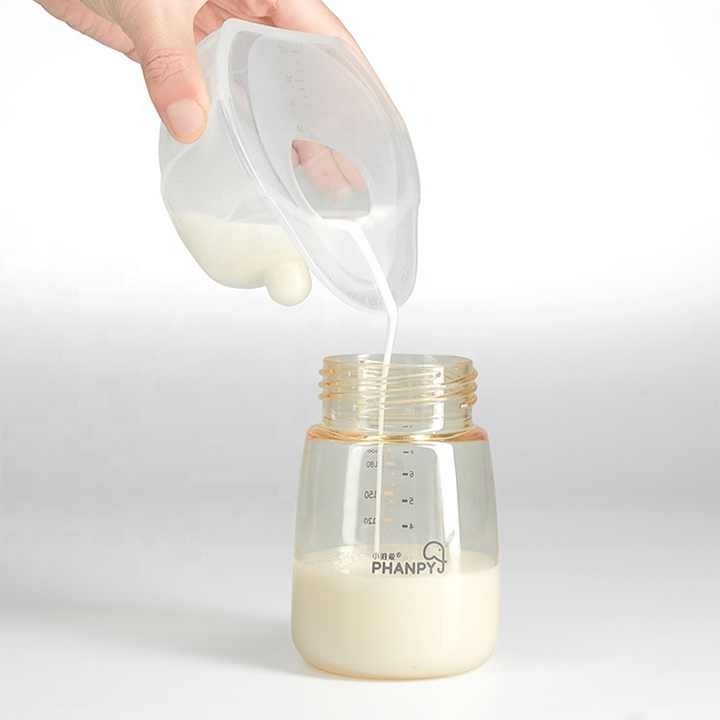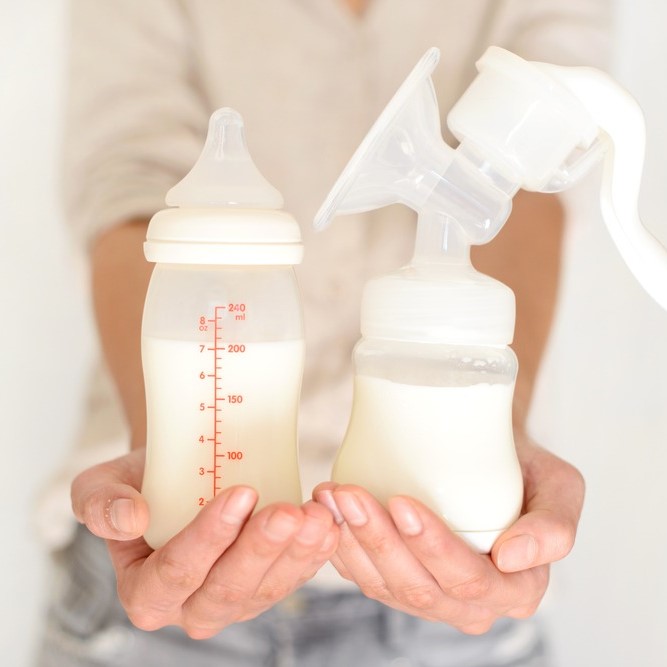What Is Yellow Breast Milk?
Yellow breast milk is often the first type produced after childbirth. It is thick and creamy in texture. In the early days of breastfeeding, this yellow milk is known as colostrum. Colostrum is highly concentrated with nutrients and antibodies. This milk is crucial for the newborn’s development. The yellow color comes from beta-carotene and other nutritional components. These are essential for the baby’s immune system and growth. Over time, the milk transitions in color, often becoming lighter or whiter. This change happens as the milk shifts from colostrum to mature milk. Mothers might notice a yellow tint at different stages, especially during morning feeds. It can also occur if there’s a longer gap between feedings. The yellow tint should not cause worry. It generally indicates high levels of nutrients that are beneficial for the baby. Remember, consistency and color can vary among women and are not fixed measures. Mothers should know that yellow breast milk is a natural and positive indication of healthy milk.
The Significance of Colostrum in Newborn Nutrition
Colostrum is a newborn’s first superfood. It kick-starts their life with vital nutrients. This early breast milk is rich in proteins, vitamins, minerals, and antibodies. Its dense composition helps build a strong immune system in babies. Colostrum also supports healthy gut development. It establishes beneficial bacteria in the baby’s digestive tract. These early feeds are crucial for long-term health.
A baby’s immature immune system gets a boost from colostrum. It is packed with immunoglobulins, especially IgA, which guards against germs. By coating the baby’s inner surfaces, IgA helps protect the lungs and intestines. This acts like a shield against infections.
The yellow color of colostrum is because of its high concentration. Less is more here; even small amounts give immense benefits. Colostrum promotes healthy weight gain and supports neurological development. The presence of yellow breast milk is a sign of this golden window in a child’s nutrition. It plays a pivotal role during the first few days post-birth.
New mothers should ensure to begin breastfeeding soon after birth. This takes advantage of colostrum’s benefits. Regular feeding during this period maximizes the transfer of these key nutrients. The impactful role of colostrum sets the groundwork for a baby’s development and wellness.
Factors That Can Influence Breast Milk Color
The color of breast milk can change for several reasons. Diet is a major factor. Foods that are brightly colored, like carrots or squash, can tinge breast milk yellow. This is due to beta-carotene, the same nutrient that gives colostrum its golden color. Supplements containing beta-carotene can have a similar effect.
Hormonal changes in a mother’s body also play a role. These can alter breast milk’s appearance. Stress and medication might affect color too. However, slight changes are usually normal and not a cause for concern.
Breast milk may look different at various times. During a feeding session, the initial milk is watery and light. It gets creamier and richer, and possibly yellower, as the feeding goes on. This is due to the higher fat content released later in the session. The time since the last feeding can impact color as well. If there’s a long gap, the next milk might have a deeper hue.
Some mothers worry when they see changes in their milk. They might wonder if it’s still good for their baby. It’s important to remember that variations in breast milk are normal. They are often signs of its complex and changing nutritional profile.
If the milk appears rusty or pink and there’s no dietary cause, it might be blood. This can happen due to cracked nipples or a small capillary break in the breast. It’s not harmful to the baby, but moms should seek advice if it continues.
In summary, many factors can influence breast milk color. Diet, hormonal shifts, and the timing of feedings are the usual causes. Occasional color changes are common and reflect the dynamic nature of breast milk. Mothers should observe but not worry about these variations. They are usually part of the breastfeeding journey.
Nutritional Content and Benefits of Yellow Breast Milk

Yellow breast milk is not just unique in color but also rich in nutrients. It boasts a high concentration of vitamins, minerals, and essential fats. These components are critical for a newborn’s growth and development. Here’s a breakdown of the nutritional content and benefits:
- Vitamins and Minerals: Yellow breast milk, especially colostrum, is packed with vitamins A, E, and K. It also contains minerals like calcium and iron. These are vital for the baby’s developing vision, skin health, and blood clotting.
- Proteins: High in proteins, this early milk provides the building blocks for muscle and tissue development. Colostrum is particularly rich in antibodies that help fight infections.
- Fats: The fats found in breast milk are essential for brain development. They also aid in the absorption of fat-soluble vitamins.
- Carbohydrates: Lactose is the primary carbohydrate in breast milk. It provides energy and helps in the growth of beneficial gut bacteria.
- Immunoglobulins: These immune factors are abundant in colostrum. They protect the baby’s gut and also help in developing long-lasting immunity.
Beyond nutrition, yellow breast milk has other benefits. It helps in pain relief and reduces the risk of jaundice. It might even enhance cognitive development in infants. The natural antioxidants in this milk guard against cellular damage.
In essence, yellow breast milk is a powerhouse of nutrients tailored for newborns. It is the first step in ensuring a strong and healthy foundation for a child’s life. Mothers can take pride in providing this superfood that adapts to their baby’s needs. As time goes by, the milk will change. But the initial yellow hue is a sign of the rich, life-giving properties it contains.
Common Concerns and Misconceptions About Breast Milk Color Variations

When mothers notice yellow breast milk, some wrong ideas may come to mind. Many think color change is bad. But, this isn’t true. Here, we’ll tackle common worries and wrong beliefs about breast milk color changes.
- Color Means Spoilage: Some believe breast milk that isn’t white is spoiled. This isn’t correct. Color can change because of diet or time since last feed. These changes don’t mean the milk is not safe.
- Color Reflects Quality: Another idea is that milk color shows quality. This isn’t a fact. Yellow breast milk is full of good nutrients, even if it looks different from white or clear milk.
- Only White Milk Is Healthy: Some think only white breast milk is healthy. This is not true. Yellow breast milk, especially when it’s colostrum, is very healthy for babies.
- Any Color Change Is a Worry: It’s normal to worry when color changes. But most times, it’s part of normal milk changes. If there’s no other worry like pain or health issues, the varied colors are normal.
Mothers need to know that many things can affect milk color. It’s often no need for worry. The best plan is to watch and learn how one’s own milk may vary. When any real problem or doubt comes up, getting help from a lactation expert or a doctor is the right step.
How Diet and Supplementation Affect Breast Milk Color
Breastfeeding mothers often find that their diet can influence the color of their milk. Specific foods, particularly those rich in color, may cause breast milk to turn yellow. For example, eating carrots, sweet potatoes, or pumpkins, which are high in beta-carotene, could cause this effect. Beta-carotene is the same nutrient that gives colostrum its golden hue. Likewise, other foods like green leafy vegetables might lead to a greener tint in the milk.
Supplements containing beta-carotene or other vitamins can also change milk color. Supplements like vitamin B12 or those focused on skin health often contain beta-carotene. Therefore, if breastfeeding mothers take these supplements, they might notice a similar yellow tint in their milk.
Yet, it’s important for mothers to know this is typically no cause for concern. The color change is natural and indicates the breast milk contains diverse nutrients. These nutrients come from the mother’s diet and supplementation, passing on to the baby. So, while a varied diet is good, mothers should ensure it is balanced and healthy. This will safeguard the quality of the breast milk.
It’s also worth noting that hydration plays a role in milk color. When mothers are well-hydrated, their milk may appear lighter. If they are dehydrated, the milk could look more concentrated and deeper in color. Drinking plenty of fluids is essential for maintaining a good breast milk supply.
To summarize, the color of breast milk is often a reflection of a mother’s diet and any supplements she might be taking. While yellow breast milk can result from eating certain foods or taking dietary supplements, it generally does not indicate any health issues. Nonetheless, a balanced and nutritious diet is crucial for the health of both mother and baby. Mothers should drink sufficient water to maintain hydration and proper milk consistency.
When to Consult a Lactation Expert or Pediatrician

While shifts in breast milk color are normal, some cases need expert advice. It’s key for mothers to know when to seek help. Here are situations when a lactation expert or pediatrician should be contacted:
- Persistent Blood in Milk: If blood consistently appears in the milk, it could signal a health issue.
- Pain While Breastfeeding: Pain can mean a poor latch or an infection like mastitis that needs treatment.
- Worries About Milk Supply: If moms fear they’re not producing enough milk, professionals can offer guidance.
- Baby’s Weight Gain: If a baby isn’t gaining enough weight, the quality or quantity of milk might be the cause.
- Baby’s Reaction: If a baby refuses to feed or seems upset when feeding, there could be a problem.
It’s always better to err on the side of caution. Mothers should not hesitate to consult with professionals if they have any concerns. This ensures the well-being of both the mother and baby. Lactation experts and pediatricians can provide support and valuable insights on breastfeeding issues. They help ensure that the journey of breastfeeding is healthy and fulfilling for both mother and child.
Tips for Monitoring and Managing Breast Milk Color Changes
For new mothers, noticing changes in the color of their breast milk can be surprising. However, as we’ve discussed, these changes are usually natural and a sign of the dynamic nature of breast milk. Here are some practical tips to help mothers monitor and manage these changes:
- Keep a Food Diary: Track what you eat to see if food impacts your milk’s color.
- Stay Hydrated: Drink lots of water to maintain milk supply and color consistency.
- Observe Regularly: Note the color changes at different feeding times and intervals.
- Seek Patterns: Look for patterns that might connect diet, hydration, and milk color.
- Limit Supplements: If you’re on vitamins that alter milk color, confer with a lactation consultant.
- Don’t Panic: Most color variations are normal; don’t let them cause you stress.
- Consult Experts: If color changes come with other concerns, talk to a professional.
- Educate Yourself: Learn about the broad spectrum of breast milk colors and what they indicate.
- Trust Your Body: Believe in your ability to produce the right nutrients for your baby.
By following these tips, mothers can become more comfortable with the natural variations in their breast milk and better understand how their actions can affect it. As always, it’s important to maintain open communication with healthcare providers when questions or concerns about breast milk arise.